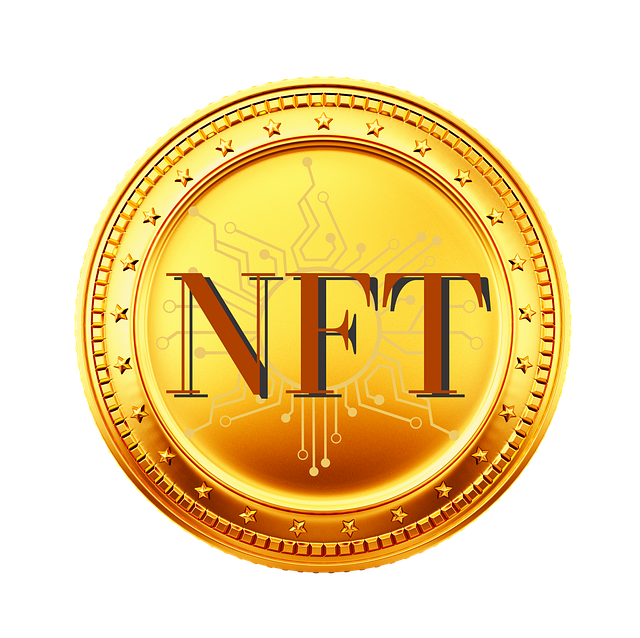AI Crypto Trading Bot Price: What You Need To Know
Author: Jameson Richman Expert
Published On: 2025-08-23
Prepared by Jameson Richman and our team of experts with over a decade of experience in cryptocurrency and digital asset analysis. Learn more about us.
In the rapidly advancing realm of cryptocurrency trading, AI-powered crypto trading bots have emerged as essential tools for traders seeking to maximize profitability, mitigate risks, and navigate the unpredictable volatility inherent in crypto markets. These sophisticated algorithms automate complex trading strategies, analyze vast datasets in real-time, and execute trades with lightning-fast precision—capabilities that outperform human limitations. As the crypto markets continue to evolve, leveraging AI-driven automation provides traders with a crucial competitive edge, enabling smarter, faster, and more disciplined trading decisions.
Understanding the cost structure of these AI trading bots is vital for making informed investment choices. Prices can vary dramatically based on features, technological sophistication, support services, and integration capabilities. This comprehensive guide explores the factors influencing pricing, helps you evaluate value propositions, and assists in selecting the most suitable bot within your budget—whether you're a beginner, an experienced trader, or an institutional player.

Understanding the Range of AI Crypto Trading Bot Prices
The pricing spectrum for AI crypto trading bots generally falls into three main categories: free, freemium, and premium. Each tier caters to different user needs, skill levels, and trading objectives, offering distinct functionalities, complexity levels, and support options.
Free and Open-Source Bots: Projects like Gekko, Zenbot, and Freqtrade are popular among technically skilled traders who prefer to customize and control every aspect of their trading automation. These platforms are entirely free and open-source, allowing users to modify code, integrate APIs, and run on personal servers or cloud environments. While they offer extensive flexibility and educational value—ideal for developers or hobbyists—they often lack advanced features such as machine learning analytics, multi-exchange deployment, or multi-strategy support without significant modifications. Moreover, they require considerable technical expertise to set up and maintain, including managing API keys, server security, and software updates.
Freemium Models: Platforms such as 3Commas, Cryptohopper, and TradeSanta operate on a freemium basis. They provide core functionalities at no cost, with tiered subscription plans unlocking advanced features like backtesting, social trading, automation of multiple strategies, and detailed analytics. Typical pricing starts around $10 to $50 per month, making them accessible to novice and intermediate traders. Higher tiers often include multi-exchange support, multi-asset trading, faster execution, priority support, and additional automation tools, offering a balanced mix of affordability and enhanced capabilities.
Premium, Enterprise-Grade Bots: For professional traders, hedge funds, and institutional investors, high-end AI trading bots involve extensive automation, sophisticated machine learning models, predictive analytics, and multi-exchange orchestration. These systems can cost from $100 to over $500 per month, with some enterprise solutions requiring custom licensing or API integration fees. The higher prices reflect advanced features such as high-frequency trading (HFT), real-time data streaming, proprietary signals, low-latency execution, and dedicated support teams. Examples include proprietary systems used by hedge funds and quantitative trading firms that incorporate neural networks, sentiment analysis, and AI-driven risk management frameworks.
For example, platforms like CryptotradeSignals provide comprehensive AI-driven functionalities, including strategy backtesting, optimization, and real-time alerts—justifying their premium pricing. Additional costs might include premium data feeds, enhanced security measures, and cross-platform accessibility, all critical for high-stakes trading environments where milliseconds matter.
Factors Influencing the Price of AI Crypto Trading Bots
Multiple factors contribute to the significant variation in AI trading bot prices. Recognizing these elements helps traders evaluate whether a particular solution offers proportional value relative to its cost:
- Algorithmic Sophistication: The core intelligence of an AI trading bot depends heavily on the complexity and novelty of its algorithms. Bots employing deep neural networks, reinforcement learning, and advanced predictive analytics can adapt dynamically to market shifts, identify subtle patterns, and improve over time through continuous learning. Such sophistication often commands higher prices due to the computational resources, research, and development involved. These advanced algorithms can significantly boost trading accuracy, profitability, and risk management, especially in highly volatile markets.
- Customization and Flexibility: The degree to which a bot allows strategy customization, parameter tuning, and integration with various signals directly impacts its value. Highly flexible systems enable traders to embed their specific risk management rules, incorporate multiple technical indicators, and adapt strategies to changing market conditions. Customization often involves user-friendly interfaces, scripting capabilities, or API integrations, which justify higher costs. For traders seeking tailored solutions, investing in customizable platforms can lead to better long-term results and more refined control.
- Exchange and Asset Support: Compatibility with multiple exchanges—such as Binance, MEXC, Bybit, Kraken, and Coinbase—adds complexity to development and maintenance, increasing product prices. Broader exchange support offers diversification and risk mitigation but entails additional integration efforts. Support for various trading assets—including altcoins, DeFi tokens, derivatives, and NFTs—also influences pricing, as managing multiple asset classes requires more sophisticated data handling and operational infrastructure.
- Support and Maintenance Services: Continuous customer support, regular updates, security patches, and technical assistance are crucial for uninterrupted operation, especially during market upheavals. Premium support—such as dedicated account managers, priority troubleshooting, and on-demand training—reflects higher subscription costs. Reliable support ensures operational stability, minimizes downtime, and helps traders respond swiftly to market anomalies or technical issues.
- Data and Signal Access: High-quality, real-time market data feeds, sentiment analysis, proprietary trading signals, and news integration significantly enhance decision-making. These sources often involve additional subscription fees but can dramatically improve trading accuracy, timing, and risk mitigation. For instance, access to exclusive sentiment data or AI-generated predictive signals can provide a strategic edge over competitors, justifying premium pricing.
Based on extensive experience, investing in a higher-priced, well-supported AI trading bot often yields better profitability and lower risk. Supplementary tools—such as position size calculators, automated stop-loss orders, and performance trackers—further optimize trading results and guard against costly mistakes during highly volatile periods.
How to Choose the Right AI Crypto Trading Bot Based on Price
Selecting the optimal trading bot aligned with your trading goals and budget involves a strategic evaluation process. Start by testing free trials or basic plans to assess usability, interface intuitiveness, and customer support quality. Many platforms offer demo accounts or trial periods, allowing you to evaluate features without significant financial commitment.
Leverage promotional discounts, referral programs, and affiliate offers. For example, registering via official links such as Binance or MEXC can provide benefits like trading fee discounts, bonus credits, or integrated tool access at minimal initial costs.
As your trading volume and complexity grow, consider investing in additional tools—such as crypto signal apps, webhook automation, or advanced portfolio management—to further enhance performance. For example, integrating webhooks via services like Zapier or IFTTT can automate trade alerts, order execution, and portfolio rebalancing, saving time and reducing manual errors.
Remember, the most critical aspect is combining a robust, high-quality AI trading bot with disciplined risk management strategies—such as setting stop-loss and take-profit levels, diversifying strategies, and conducting regular performance reviews—to ensure sustainable trading success.

My Personal Journey With AI Crypto Trading Bots
My initial foray into AI crypto trading involved deploying a low-cost, basic bot, attracted by the allure of quick gains. However, I quickly discovered that limited functionality, lack of support, and poor adaptability often led to inconsistent results and occasional losses. This experience underscored the importance of investing in reliable, feature-rich automation tools with active development, community support, and frequent updates.
Transitioning to a more advanced platform equipped with machine learning capabilities, multi-exchange connectivity, and comprehensive risk management features dramatically improved my trading outcomes. I gained the ability to adapt strategies dynamically, reduce manual oversight, and implement disciplined risk controls such as position sizing calculators and stop-loss orders. Over months of consistent use, I observed that investing in quality tools and ongoing support significantly increased profitability and capital preservation, even during market downturns.
Final Thoughts
The price range of AI crypto trading bots reflects their underlying sophistication, feature set, and support infrastructure. While budget-friendly options may seem attractive initially, investing in reputable, robust systems with active support and regular development often yields better long-term results. Conduct thorough research, test demo versions, and explore comprehensive resources—such as this detailed guide—to understand each tier’s nuances.
Ultimately, successful crypto trading hinges on the synergy between selecting the right AI trading bot and implementing disciplined risk management, including stop-loss orders, strategy diversification, and ongoing performance analysis. With patience, diligent research, and the right tools, automation can become your most powerful ally in achieving consistent, sustainable trading success in the highly volatile crypto landscape.